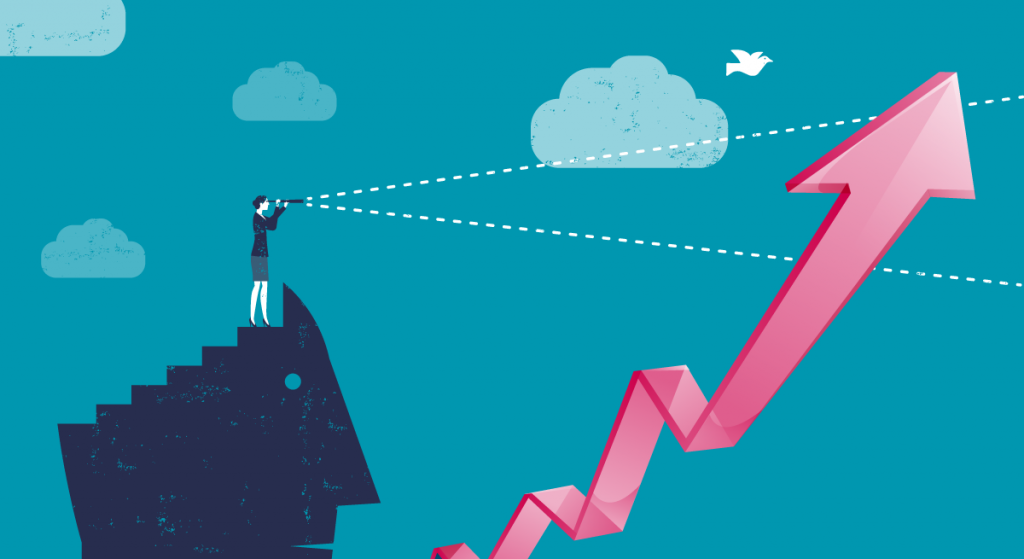
On-Demand is not a buzzword anymore, rather it has become our way of living and doing business. Customers feel empowered like never before and they are no more hesitant in paying more for the sake of their convenience. The impulsive generation loves the instant gratification of daily needs via smartphones. Surrounded by gadgets that outsmart humans, we have adopted the world that works at a tap, the world of on-demand. While you might think that Uber, the ride-hailing company, was the first to adapt and then introduce the concept of on-demand economy, that is not the case.
Table of Contents
The concept of on-demand services emerged long back when Webvan, an online marketplace introduced the concept of grocery deliveries under 1 hour. The startup could not survive and is now taught as one of the biggest startup failure case studies in various business schools. The company launched at the wrong time considering the restricted access of technology and lack of awareness among the users. Webvan would have been, what we call Amazon today, if only it had launched 20 years later. There were other great startups such as Pets.com, Color etc. that had launched too soon that they failed dramatically despite having huge funding.
The trend that has become a routine now, continues to rise consistently. The total revenue from all on-demand sectors was $14 billion in 2014 and is expected to reach a whopping $335 billions in 2025. Online marketplaces have specifically seen a sea change with a total of 16.3 million consumers that spent $36 billion in 2015 and there were Uber and Lyft with 7.3 million consumers with annual spending of $5.6 billion. There was a fall in on-demand investments in the following year, 2016 because the investors started to lose interest with so many budding startups entering the marketplace space. However, there were other powerful players like Postmates that raised huge funding. The pressure to grow quickly led to massive startup failures and a lot of entrepreneurs concluded that on-demand economy is just a bubble. That being said, 2018 is still the year of on-demand economy and this bubble has not burst. It is difficult to fathom which companies would end up revolutionizing the on-demand economy. However, we can still expect some already established on-demand startups to be more organised and disciplined with their services and support.

When you empower your customers, you have meet their expectations and beyond. The rising on-demand economy has opened a lot of doors for the potential entrepreneurs. Due to easy accessibility of resources and constant internet connectivity, privately owned firms open every other day. Since they offer services at low costs as compared to traditional or established firms, customers tend to choose them. Still all of these are not able to sustain and often fail in the first year of their business. So, what is exactly wrong with the on-demand economy? Why has Amazon not failed even after 25 years?
The answer is customer experience. If you fail to satisfy your customers, that defies the entire purpose. Modern customer is not short of choices and is open to experiment with various service providers for different offerings. Therefore, if you don’t keep your customers happy, somebody else will. On-demand economy is a combination of service and technology. You have to pay equal attention to both by maintaining unit economics and the customer experience.
The relationship of the company with its customer is what we call customer experience. From the moment your customers begin browsing services or goods on your mobile application or a website, they start with a customer journey that your business needs to focus on. Finding out the touchpoints that ensure a smooth customer journey is important for any on-demand business. Loyal customers are often a result of quality service and efficient customer experience that eventually leads to more referrals. To provide an excellent customer experience, multiple areas of the company need to work jointly, from sales to operations to marketing to IT support, every department needs to deliver a smooth customer experience.
Companies like Uber, Airbnb, Amazon, Ebay etc. have empowered the customers with their instant provision of services. This on-demand paradigm shift has made the customers more demanding than ever. Every other startup claims to provide the best services but their deliveries are standard. Thus, the customer expectations are rising due to such promotions and marketing campaigns. As a result, companies use the art of manipulating customers with fake promises. Sales people over promise about company’s services and then the operational department fails to deliver. This is where you lose a good customer because of bad customer experience. A lot of newer on-demand startups that are not customer centric fail after a while and hence it is important to have definite strategy for customer journeys before launching your online business.
The challenges faced by on-demand economy to provide better customer experience has necessitated the need of solutions that can streamline their daily operations in an efficient manner. Thus, a lot of companies are now leveraging the power of the 3A’s (Analytics, Automation and Artificial Intelligence) in their business. Analytics help enterprises in understanding their customers and their preferences in a better way. Data-driven decisions have a direct impact on customer engagement. Analytical data is beneficial for every organization in order to frame new business methodologies or modify the existing ones. Automation does not only include robotic automation but automated decision making and marketing as well, that eventually leads to streamlining of daily operations. Artificial Intelligence uses the data rich environment to interact with customers and employees in an intelligent manner. Thus, 3A’s are all together used to transform enterprises into intelligent enterprises, especially in the on-demand space.

Enterprises tend to miss out a lot of granular details with manual tracking and management of resources, fleet and processes. Entrepreneurs have now started investing in the smart tracking software that not only help in tracking the field workforce but also enhance the overall productivity as well as optimizing the business costs. Finally, they are now focusing on the UI and UX of tech solutions equally which again leads to a smooth customer experience. Tracking solutions can have other advancements such as geo-fencing, route optimization and automatic order assignment. For an order and delivery platform, you can implement these advanced features along with tracking to get the most out of the on-demand economy.
Pro Tip: Avoid being late as late deliveries always annoy the customers.
![]()
Today’s customers are impatient and have become way too demanding. Gen X, Y and Z behave completely different when it comes to the tech solutions. That being said, majority of the customers of the on-demand economy belong to Gen Y and Gen Z. Their impulsive behavior makes them the most unpredictable target audience. This generation likes to keep items in their carts for many days before making the buying decision. Also, this generation loves planning their wardrobe just a day before the occasion. To ensure that you have a good relationship with them, you have to keep them informed and engaged (all the time).

On-demand service apps have started adopting real-time notifications to interact with their customers for a several reasons. First, you have to keep them informed about their order status, right from the confirmation to the delivery, there should be email notifications, messages and push notifications. Second, notifying customers about offers based upon their order history and browsing history, is great for retaining customers. Third, chatbots help in resolving customer issues through real-time communication. Therefore, a consistent, personalized and real-time communication system should be incorporated in all on-demand service apps.
Pro Tip: Do not spam your customers with too many emails or messages.
Business intelligence tools help in understanding the customers and their needs in an efficient manner. To meet the emerging needs of the on-demand world, it is mandatory for the enterprises to tap on contextual information. With predictive analysis, enterprises can find out what their customers would need in the future. As a result, there will be better supply chain management, ensuring stable profits.

There are easy ways and then there are right ways to enter into the disrupting sectors of the on-demand economy. To meet the changing needs of the customers, every business would need to adopt the 3A’s sooner. This evolution of on-demand economy is yet again disrupting the traditional businesses. A better, organized and smooth on-demand world is into construction. Till, then aspiring entrepreneurs can work on new innovative ideas, keeping the customer experience at the forefront.
